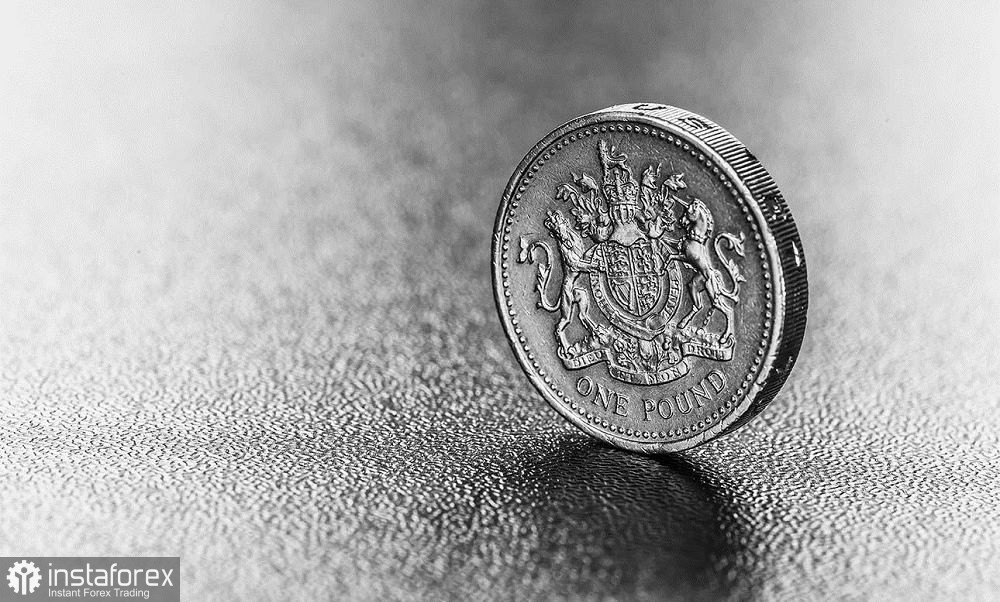The GBP/USD pair updated 3.5-month price low, consolidating within the framework of the 18th figure. The downtrend is not only because the dollar is strengthening but because the British currency, which is weakening all over the market, also helped. In a day the pair fell more than 250 pips after two weeks of sideways movement within a wide range of 1.1950-1.2150. Federal Reserve Chairman Jerome Powell helped the GBP/USD bears to overcome the lower limit of this echelon, and then the price fell to the base of the 18th figure. The hawkish signals from the Fed chief contrasted with the dovish messaging from the Bank of England. Discrepancy between the rates of the central bank is becoming stronger, so the downtrend is likely to develop further.
Powell triggered turbulence
At the end of January, the pound updated a semi-annual high, reaching 1.2446. Then the price reversed and actively fell for some weeks, finally getting stuck on the limit between the 19 and 20 figures. Lately, the pair showed horizontal movement - neither the bulls nor the bears could make sharp movements, though they tried to do it.

The Fed chief said that the central bank is ready to accelerate the pace of interest rate hikes "if necessary". At the same time, he suggested that the final rate level would be revised upward. The market interpreted Powell's words accordingly: the probability of rate hike by 50 points at the end of the March meeting jumped immediately to 76% (before Powell's speech it was less than 30%). There was also a corresponding discussion among experts concerning the final level of the interest rate. The baseline scenario assumes that the rate would rise to 5.5%, although a more ambitious target of 5.75% is increasingly heard. Moreover, the market started to cautiously voice the "prohibitive" 6% level, although the probability of this scenario's realization is quite small. At least for now.
However, the flywheel of hawkish expectations has just begun to unwind: Powell eloquently made it clear that the Fed will not hesitate to return to a 50-point rate hike and will revise the upper bar of the current cycle. Now every subsequent inflation report that comes out from the U.S. will provide significant support for the dollar, as it will be viewed through the prism of Powell's stance.
Amid such prospects, the US dollar index renewed its three-month high, approaching the limits of the 106th figure for the first time since November last year. The major dollar pairs changed their arrangements accordingly. In case the pound provides support to the downtrend, as it has been getting weaker throughout the market lately (look at the dynamics of such cross pairs as GBP/JPY or EUR/GBP).
The BoE's dovish prospects
In early March, BoE Governor Andrew Bailey said that the central bank may have ended the current cycle of rate hikes, but it is too early to speak about the further trajectory of monetary policy. Such a dovish message is difficult to interpret otherwise, especially as the corresponding hints were sounded by the British central bank at the February meeting (rhetoric of the accompanying statement was considerably softened). Now Bailey is not resorting to half hints, stating his position in a very straightforward way. According to him, some further increase in the rate "may be justified", but the relevant decision "has not been made yet".
That said, it is worth noting that Bailey is not the only one who has stated a possible pause. For example, a member of the Monetary Policy Committee of the BoE, Swati Dhingra, warned her colleagues against further rate hikes. In her opinion, many of the effects of previous hikes have yet to materialize, and excessively tightening monetary policy "poses a greater risk". By the way, Dhingra did not vote for a rate hike at the previous meeting, nor did her colleague Silvana Tenreyro.
Conclusions
Amid such rhetoric of the BoE representatives, the probability of another rate hike at the next March meeting has sharply decreased. Bailey and some members of the Committee substantially softened their position, "directly" admitting a pause in raising the rate. While Powell, on the contrary, only added fuel to the fire, toughening his rhetoric and surprising markets with a hawkish attitude. Therefore, we would expect the pair to remain under pressure due to policy divergences between the Fed and the BoE.
From a technical point of view, the pair is under the bottom line of the Bollinger Bands indicator on the daily chart, as well as under all lines of the Ichimoku indicator, which shows a bearish "Parade of Lines" signal. All these technical signals also indicate bearish movement. The first and so far, the main target of the move is 1.1750, which is the bottom line of the Kumo cloud on the weekly chart.
 English
English 
 Русский
Русский Bahasa Indonesia
Bahasa Indonesia Bahasa Malay
Bahasa Malay ไทย
ไทย Español
Español Deutsch
Deutsch Български
Български Français
Français Tiếng Việt
Tiếng Việt 中文
中文 বাংলা
বাংলা हिन्दी
हिन्दी Čeština
Čeština Українська
Українська Română
Română

